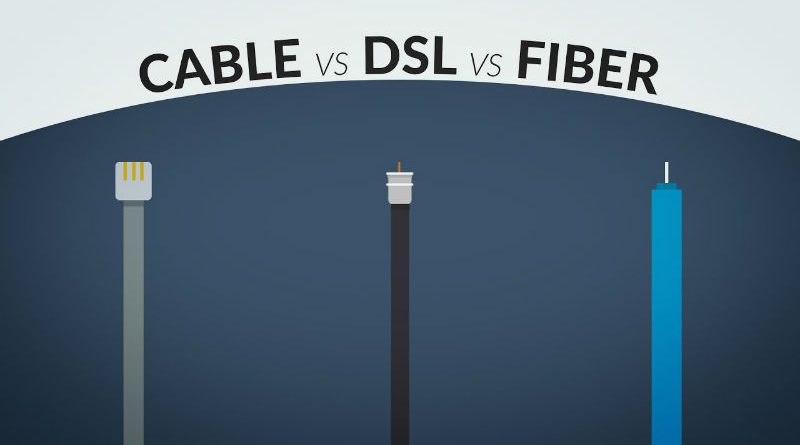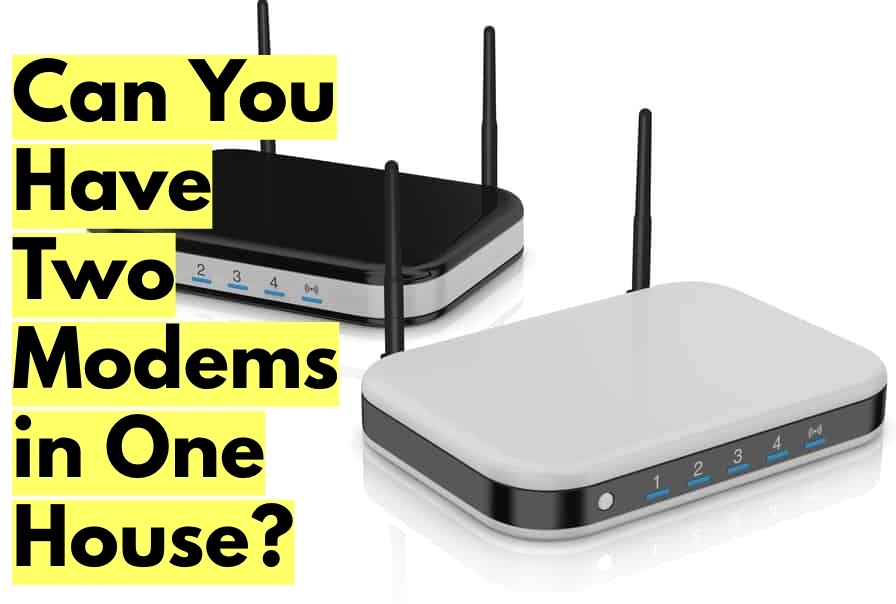Cable, Fiber, and DSL – these are the three main types of internet connections you might come across when you are choosing how to get online. Having one of these connections means you can do all sorts of things on the internet. You can post photos and videos on social media, video chat with friends, send and receive messages, and much more.
Now, the kind of connection you have depends on where you live and who your internet provider is. It’s a bit like choosing the right path to take on a map. You need to know the differences between these options to pick the one that suits you best.
In this article, we are going to help you understand the differences between DSL vs Cable vs Fiber. So, if you are in a dilemma about which internet connection to choose, you might find this post helpful.
What Is DSL vs Cable vs Fiber
What Is DSL?
DSL (Digital Subscriber Line) is a type of internet connection that uses regular old phone lines to get you online. It’s more like an upgraded version of the dial-up internet connection that once ruled the market. However, DSL is much faster than dial-up internet and uses advanced technology.
DSL works by sending data through high-frequency waves on your phone line. To make it work, you need a DSL modem, which decodes the received signals into signals that are required to access the internet.
DSL is great because it can handle both surfing the web and talking on the phone at the same time. The speed you get with DSL can vary, but it’s usually pretty fast, anywhere from 1 Mbps to 100 Mbps for downloading stuff. The uploading speed is a bit slower and ranges between 380 Kbps and 10 Mbps.
If you already have phone lines at your place, you can easily get DSL. You just need to get a DSL modem from your internet company, and you are all set to go online.
What Is Cable Internet?
Cable internet is a type of broadband technology that provides access to high-speed internet using coaxial cable.
You see, nowadays, the companies that provide cable TV connections aren’t just about phone services and TV programs, but they also offer high-speed internet plans. Even though these internet signals travel on the same wires as your cable TV, you need a cable modem to go online.
When you sign up for cable internet, your cable company will give you one of these cable modems. Your ISP sends data through the Cable Modem Termination System, which is a big hub for internet signals. These signals zoom through underground coaxial wires right into your cable modem at home. Once the signals reach your home, you can go online and browse cool stuff on the web.
What Is Fiber Internet?
Fiber internet is the latest standard in the broadband industry. Instead of using regular wires like coaxial or copper cables, fiber internet sends data using light pulses.
Fiber optic cables are way different from the ones you might have seen before. They are incredibly fast and reliable. Since these cables have a tiny diameter, they are bundled together to create bigger cables that go underground.
Fiber internet is known for its super-fast speed. It allows users to upload and download stuff in a jiffy. The speed usually ranges from 250 Mbps to 1 Gbps. Unlike other internet cables, fiber optic cables don’t slow down even if a lot of people are using the internet at the same time. This is what makes it a popular choice among users.
Related| Fiber vs Cable Internet: Which One Is Better & Fast
DSL vs Cable vs Fiber: What’s The Difference?
In this section, we will draw a detailed comparison between the three and determine which one is the best.
1. DSL vs Cable vs Fiber: Data Transmission
The first big difference is how these three connection types send and receive data. DSL uses your regular telephone lines, like the ones you use for talking on the phone.
Cable uses the same wires as your TV and fiber internet transmits data using light pulses through super-thin glass cables hidden underground.
2. DSL vs Cable vs Fiber: Speeds
In terms of speeds, fiber internet is the fastest of them all. It can go from 250 Mbps to a whopping 1 Gbps.
Cable internet, on the other hand, offers decent speed, which is much slower than fiber. To be more precise, fiber optic cables have 10,000 more bandwidth than cable internet. DSL is the slowest of all three, and the speed doesn’t exceed 100 Mbps.
3. DSL vs Cable vs Fiber: Data Throughput
Next comes data throughput, which means how much data can travel from one point to another within a given time.
DSL has the smallest capacity because it uses phone lines, followed by cable internet, which uses TV cables and can’t handle as much. But fiber internet carries a ton of data at once, and that too with less distortion. It has the highest data throughput among all the three options.
4. DSL vs Cable vs Fiber: Performance
Fiber is undeniably the best-performing internet connection and incomparable to cable and DSL internet.
A lot of people can connect to a fiber internet at the same without experiencing poor performance or signal loss. But with cable and DSL internet, if too many people join on at once, it causes congestion and reduced speeds.
5. DSL vs Cable vs Fiber: Interference
When it comes to dealing with problems like electronic interference or bad weather that can mess up your internet, fiber is the champ. Unlike the other two, it doesn’t get affected easily.
On the other hand, cable and DSL internet can sometimes struggle when things get rough.
6. DSL vs Cable vs Fiber: Cost
In terms of cost, cable, and DSL internet plans are much cheaper than fiber internet. This is because it uses a pre-existing infrastructure.
But since fiber internet is new, it costs more. Also, you need to install fiber optic cables to your home, which further increases the service cost.
7. DSL vs Cable vs Fiber: Availability
Cable and DSL internet are available everywhere because most homes have cable TV and phones. But these two technologies are not as future-proof as the fiber internet.
Fiber internet, on the other hand, has limited coverage, meaning it is available only in some places. The good news is that broadband companies are working to make it accessible countrywide.
DSL vs Cable vs Fiber: Winner
In the battle of internet connection types, fiber is the winner, especially when speed and performance are concerned.
Fiber internet is known to offer lightning-fast speeds and handle large amounts of data without causing interference and slowdowns. It makes the top choice for those who want a seamless online experience.
While cable and DSL internet are widely available, fiber’s reliability and performance make it the ultimate choice. So, if you are looking for the best internet connection, you should go for fiber.
Conclusion on DSL vs Cable vs Fiber
After reading through this comparison guide, it is clear that fiber triumphs over cable and DSL internet. It not only offers super-fast speeds, but it is also future-proof. However, it is not as accessible as the other two, and therefore everyone cannot use it at the moment. We are hopeful that this situation will change in the future.




